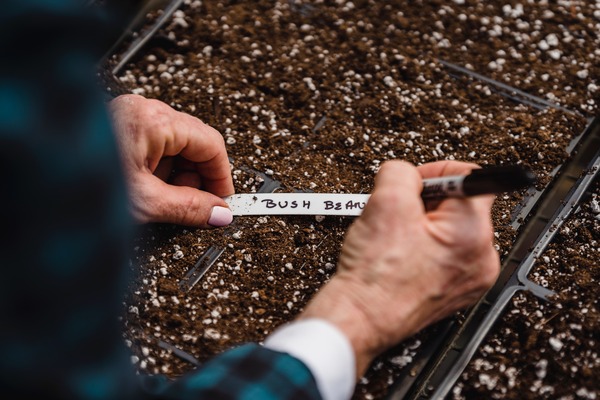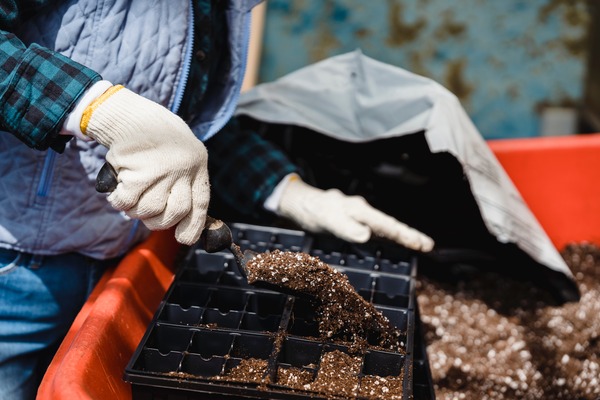Intrduction
Along with being delicious, fig trees provide an ideal addition to any garden or orchard. Proper fertilization is important for the good health and quantity of sweet fruits your fig tree will produce. It may seem hard to fertilize your fig tree in the ground, but with a few straightforward steps, you can give it the nutrients it requires to thrive. In this article, we’ll use straightforward words and simple steps to walk you through the process of fertilizing your fig tree.
Select the Appropriate Time
Your fig tree’s health and growth depend on when you fertilize the plant. The beginning of spring or late winter, right before the tree starts growing out from its winter sleep, is the ideal time to fertilize. According to where you live and the weather, this occurs typically in February or March.
Compile Your Materials
Get the required materials together before you start:
The fertilizer Select an all-purpose fertilizer with a balanced NPK ratio of 10-10-10 or 14-14-14. The percentages of nitrogen (N), phosphorous (P), and potassium (K) in the fertilizer are shown by these ratios.
Protect your hands when working in the garden by wearing garden gloves.
• Dig: To create a trench around the tree, you will need a shovel.
Calculate the amount
The size and age of your fig tree will decide how much fertilizer you want. Use roughly 1/2 to 1 pound of fertilizer for a mature fig tree as a general rule. Smaller types or younger trees could need less.
Dig a Trench Around the Tree
Start by digging a tiny gap all the way around the fig tree’s base. Around the entire tree, the trench should be roughly one to two feet from the trunk. Determine that the trench is deep enough to hold the volume of fertilizer you planned.

Apply the fertiliser
Apply the estimated quantity of fertiliser equally along the trench’s bottom. The tree could experience loss if the fertilizer makes direct contact with the tree trunk.
Cover and water
Spread the fertiliser evenly throughout the trench before covering it with soil. To help the fertiliser penetrate the soil and reach the root zone, correctly irrigate the area. To make the vitamins and minerals in the fertiliser active, proper irrigation is required.
Keep an eye on developments.
Keep an eye on your fig tree all during the growing season. Keep an eye out for signs of growth, such as developing fruit and new leaves. You can reapply a balanced, slow-release fertiliser in late spring or early summer if you see any deficits or slower development.
Conclusion
Your fig tree doesn’t need advanced fertilisation to grow. You can give your fig tree the nutrients it needs to develop by picking the perfect time, figuring out the right amount, and following to these easy instructions. To guarantee a healthy and productive crop of delectable figs for years to come, keep an eye on your tree’s development and make adjustments as needed.
FAQ- Fig fertilisation
Can I fertilise my fig tree with compost or other organic material?
• A: Although organic matter and compost are good for the health of the soil, they might not have all the nutrients that fig trees need. In addition to adding organic matter to the soil, it is advised to use a balanced granular fertiliser designed specifically for fruit trees.
Can my fig tree absorb fertiliser more than once a year?
• A: Typically, fig trees only need one application of fertiliser in late winter or early spring. However, you may use a balanced, slow-release fertiliser in late spring or early summer if you see sluggish growth or indications of nutrient deficit during the growing season. Be careful not to fertilise too much.
Can I fertilise my fig tree using liquid fertiliser?
• A: Though fig trees can use liquid fertilisers, slow-release granular fertilisers are usually suggested since they offer a consistent, long-term nutrition supply. Follow the application and frequency guidelines given by the manufacturer if you decide to use liquid fertiliser.
Is there a chance of damage if I fertilise my fig tree too much?
Yes, over-fertilizing your fig tree can be detrimental. It’s crucial that you conform to the dose recommendations for the size and age of your tree. Nutrient imbalances, root damage, and decreased fruit quality can result from overfertilizing plants.
What indications are there that my fig tree needs fertiliser?
A: Slow or stunted growth, smaller leaves, yellowing or darkening of the foliage, and decreased fruit output are all indications that a fig tree needs fertilisation. You can help make sure your tree gets the nutrients it needs by keeping an eye on its health regularly and responding to these symptoms.

The fertilizer needs for fig trees are listed in the following comprehensive table:
| Fertilization Aspect | Description | Frequency | Best Time |
| Type of Fertilizer | – Balanced, slow-release granular fertilizer with equal N-P-K ratios (e.g., 10-10-10). – Organic options like compost or well-rotted manure can also be used. | Once a year in early spring. | Early spring before new growth begins. |
| Nutrient Ratios (N-P-K) | – Aim for a balanced ratio, such as 10-10-10 or 14-14-14. | Once a year in early spring. | Early spring before new growth begins. |
| Amount of Fertilizer | – Apply 1/2 to 1 pound (0.23 to 0.45 kg) of fertilizer per year of tree age. | Once a year in early spring. | Early spring before new growth begins. |
| Application Method | – Sprinkle the fertilizer evenly in a circle around the drip line (area beneath the outer branches). – Avoid direct contact with the trunk. | Once a year in early spring. | Early spring before new growth begins. |
| Watering After Fertilization | – Water thoroughly after applying fertilizer to help it reach the root zone. | Once a year in early spring. | Early spring before new growth begins. |
| Additional Nutrients | – Check the soil pH and adjust if necessary (around 6.0 to 6.5 for fig trees). – Supplement with micronutrients like zinc or iron if deficiencies are observed. | Once a year in early spring. | Early spring before new growth begins. |
| Fertilizer for Young Trees | – Young fig trees benefit from a higher ratio of nitrogen (N) for growth (e.g., 10-5-5). | Annually during the first few years. | Early spring before new growth begins. |
| Avoid Over-Fertilization | – Excess fertilizer can lead to excessive growth, poor fruit quality, and root damage. – Always follow recommended dosages. | Once a year in early spring. | Early spring before new growth begins. |
